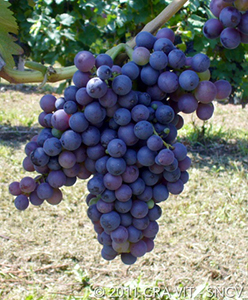 DELIVERY FROM £4.95
DELIVERY FROM £4.95 FREE DELIVERY FOR ORDERS OVER £100
FREE DELIVERY FOR ORDERS OVER £100Home » Community » Wine and Grape Guide » Bovale grande

The Bovale Grande grape, also known as Bovali Mannu in Sardinian dialect, is a black-skinned variety that has deep historical ties to Sardinia. Originally introduced from the Iberian Peninsula during the Aragonese domination in the late Middle Ages, this ancient vine has gradually adapted to the island's unique terroir. Over time, it evolved into two distinct but closely related varieties: Bovale Grande (Bovale di Spagna) and Bovale Sardo (Bovaleddu), each with its own characteristics and traditional uses in winemaking.
This robust grape is typically not vinified on its own but plays a crucial role in prestigious Sardinian red blends. In particular, Bovale Grande is used alongside Cannonau and Monica in the production of the Mandrolisai DOC, a full-bodied and structured red wine ideal for pairing with roasted meats and hearty dishes. It also contributes to the Campidano di Terralba DOC - also referred to simply as Terralba - where it is often blended with Bovale Sardo to create wines with intense color, rich body, and good aging potential.
From a viticultural perspective, Bovale Grande produces medium-sized, sub-oval black berries with a thick, dark skin covered in a waxy bloom. The grape bunches are medium in size, cylindrical-conical, and often winged, while the vine’s leaves are typically five-lobed. The variety demonstrates medium vigor and matures at a medium-late stage in the season. While the yield can be generous, it tends to be irregular from one year to the next, requiring careful vineyard management.
Despite its adaptability and strong presence in Sardinian viticulture, Bovale Grande is almost never bottled as a single-varietal wine. Its true potential is best expressed when blended, where it adds structure, depth, and complexity to regional DOC wines.



Before we say ciao, why not join our newsletter & stay up to date on everything happening on planet Italyabroad.com